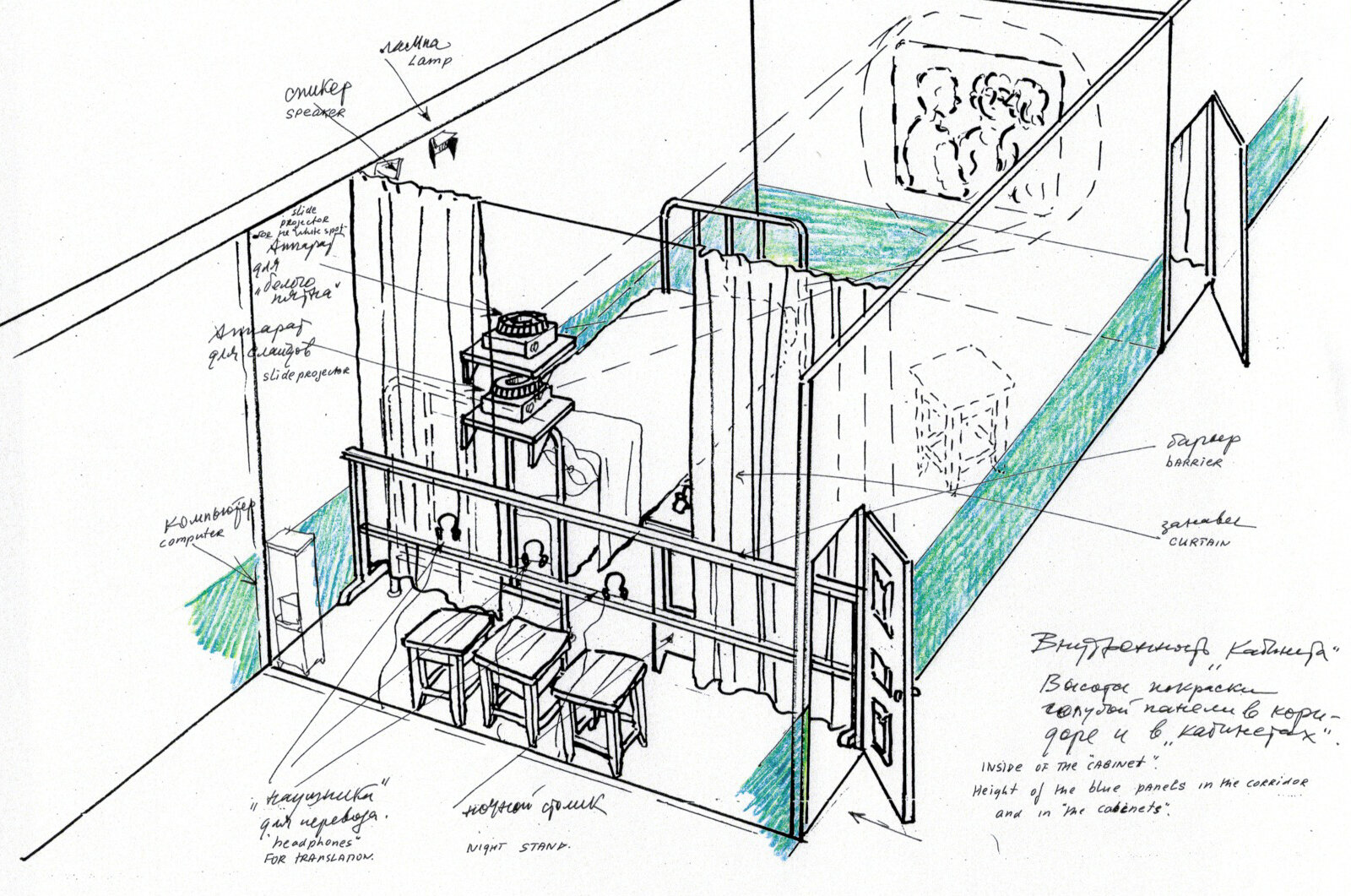The Healing with Memories
YEAR: 1997
CATALOG NUMBER: 107
PROVENANCE
Collection of the artist
EXHIBITIONS
New York, Whitney Museum of American Art
1997 Biennial Exhibition, 20 Mar 1997 — 15 Jun 1997
Berlin, Nationalgalerie at the Hamburger Bahnhof, Museum für Gegenwart
Ilya Kabakov – Treatment with Memories, 15 May 1998 — 30 Aug 1998
DESCRIPTION
The installation is a long corridor in a provincial Russian hospital. Semi-dark light bulbs hanging up above and the gray-blue paint on the lower part of the walls create a depressing atmosphere. There are six doors in the corridor, each leading into one of the procedure rooms. When the viewer enters, he sees a barrier and a curtain that is slightly parted in the middle. There is a made bed and a nightstand on the other side of the barrier. There are three small stools in front of the barrier so that the viewer might sit down, and there are headphones for listening to the translations of the texts.
The ‘treatment procedure,’ a perpetual performance that is occurring in the room, consists of the following:
There are two slide projectors on a shelf above the viewer’s head. One of them shows slides at 11-second intervals that contain biographical material (the kind that might be found in any family album). The other projector shows only a shining spot on the wall. Both projections coincide, and the depictions of the people and their portraits become blurred, as though they are floating to the surface from ‘the depths,’ similar to a vision from the past. A text in Russian can be heard at the same time, providing commentaries on each photograph. When the text ends, the slide changes. There are 21-22 such slides, and the changing of the slides occurs in a monotonous, calming rhythm.
The same situation is repeated in the other rooms. Of course, the plots and the commentaries are different in each case. The rooms are illuminated by the bright slides on the walls; the text in Russian inside the room sounds somewhat muffled, similar to a rhythmical musical accompaniment; the slides change at identical intervals. Everything is organized in such a way that the ‘treatment’ affects not only the patient lying in bed (of course, he is not really there), but also those relatives who have come to visit the patient, and naturally, the viewers of the installation, as well, if, of course, they wish to be drawn into this ‘performance’ rather than remaining as ‘outside observers.’
Images
Literature















